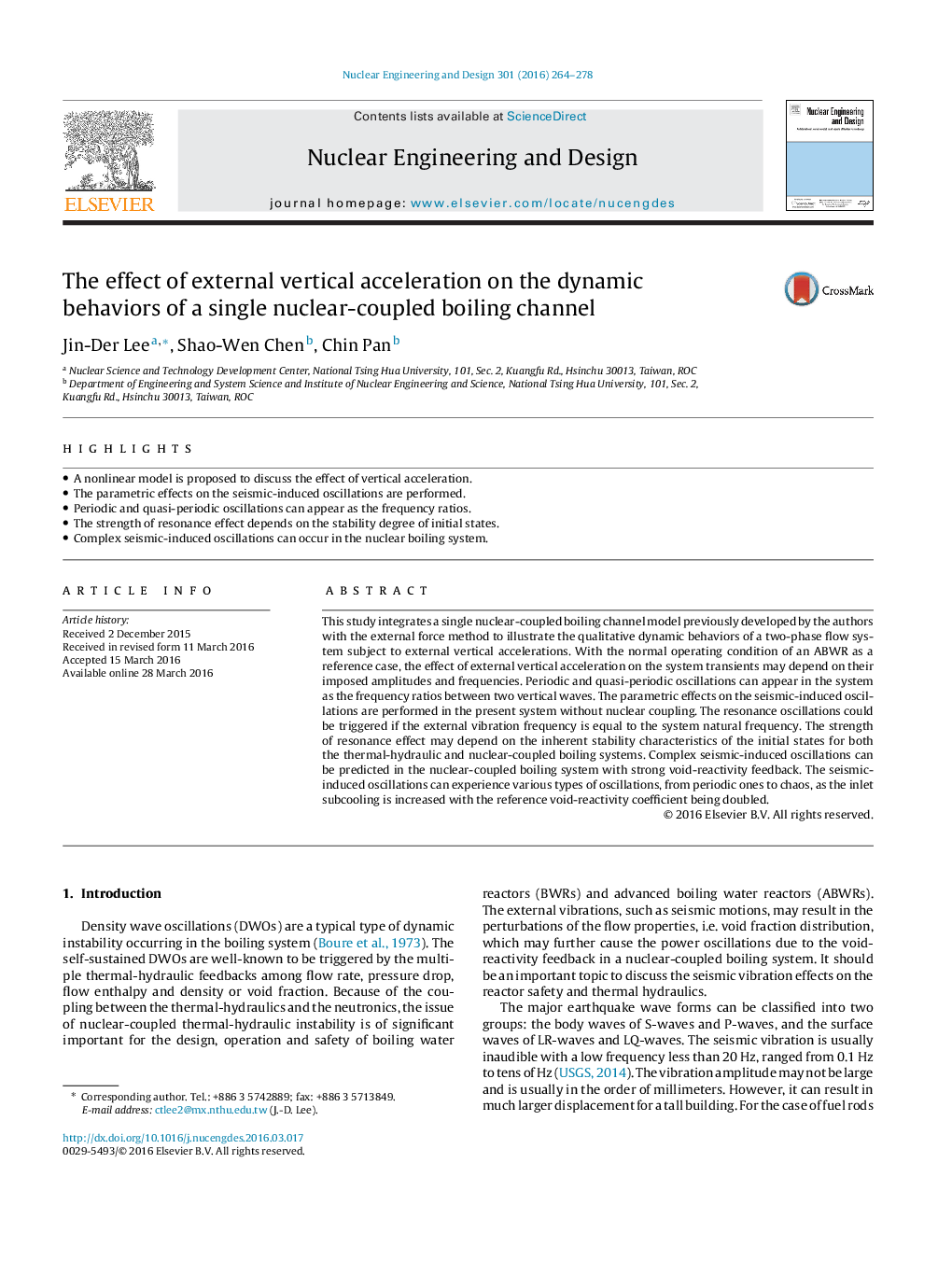| Article ID | Journal | Published Year | Pages | File Type |
|---|---|---|---|---|
| 295957 | Nuclear Engineering and Design | 2016 | 15 Pages |
•A nonlinear model is proposed to discuss the effect of vertical acceleration.•The parametric effects on the seismic-induced oscillations are performed.•Periodic and quasi-periodic oscillations can appear as the frequency ratios.•The strength of resonance effect depends on the stability degree of initial states.•Complex seismic-induced oscillations can occur in the nuclear boiling system.
This study integrates a single nuclear-coupled boiling channel model previously developed by the authors with the external force method to illustrate the qualitative dynamic behaviors of a two-phase flow system subject to external vertical accelerations. With the normal operating condition of an ABWR as a reference case, the effect of external vertical acceleration on the system transients may depend on their imposed amplitudes and frequencies. Periodic and quasi-periodic oscillations can appear in the system as the frequency ratios between two vertical waves. The parametric effects on the seismic-induced oscillations are performed in the present system without nuclear coupling. The resonance oscillations could be triggered if the external vibration frequency is equal to the system natural frequency. The strength of resonance effect may depend on the inherent stability characteristics of the initial states for both the thermal-hydraulic and nuclear-coupled boiling systems. Complex seismic-induced oscillations can be predicted in the nuclear-coupled boiling system with strong void-reactivity feedback. The seismic-induced oscillations can experience various types of oscillations, from periodic ones to chaos, as the inlet subcooling is increased with the reference void-reactivity coefficient being doubled.
